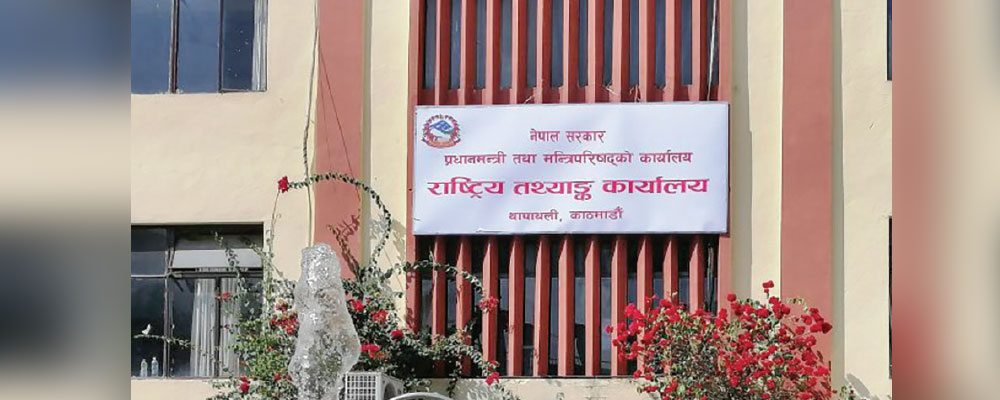
By A Staff Reporter,Kathmandu, July 2: The National Statistics Office (NSO) has estimated that the share of Sudurpashchim Province in the national Gross Domestic Product (GDP) of Nepal in the current fiscal year 2023/24 would be 7.13 per cent, up from 7 per cent last year.
Similarly, the growth rate of the GDP of this province is estimated to be 3.41 per cent in the current fiscal year 2023/24.
The Nepal Rastra Bank (NRB) has prepared half-yearly economic activity report for the fiscal year 2023/24 by studying all the nine districts under the Sudurpashchim Province both on-site and off-site and data of the NSO.
According to the preliminary data of the National Statistics Office, Nepal's economic growth would be at 3.87 per cent at consumer price for the current fiscal year.
Similarly, the GDP in basic prices will be 3.54 per cent in the current fiscal year. During the review period, the land area covered by major agricultural crops (food and other crops, vegetables and fruits and spices) decreased by 4.68 per cent, while the production of such crops increased by 0.92 per cent.
Among the major food and other crops, the production of oilseed crops has increased by 28.41 per cent and buckwheat by 21.164 per cent in the province during the review period.
Similarly, vegetable production has increased by 6.90 per cent, while fruit and spice production has increased by 3.13 per cent. Under animal products, milk production has increased by 8.52 per cent, meat by 7.29 per cent, and eggs by 4.11 per cent.
During the review period, around 10.95 per cent of the total loans from the banks and financial institutions of this province have been mobilised in the agricultural sector, according to the NRB.
The total agricultural loans mobilised by the BFIs in the province have increased by 8.07 per cent during the review period as compared to the end of the last fiscal year.
During the review period, the average capacity utilisation of the industries included in the study sample of the province is 49.98 per cent.
Among the industrial products, the production of rice, soap and bricks has increased during the review period, while the production of wheat flour, sugar and mustard oil has decreased.
According to the report, around 17.94 per cent of the total loans disbursed from banks and financial institutions of this province were disbursed to the industrial sector.
The loans mobilised by the BFIs to the industrial sector in the province decreased by 6.18 per cent compared to the end of last fiscal year and shrunk to Rs. 25.22 billion.
During the review period, the number of tourist-level hotels and lodges increased by 4.35 per cent to 48, while the number of beds in hotels increased by 1.05 per cent to 1,635.
According to the NRB, the number of real estate registrations increased by 19.86 per cent, while the registration revenue increased by 3.35 per cent in the province during the review period.
Deposits of banks and financial institutions in the province increased by 1.91 per cent during the first six months of the current fiscal year as compared to mid-July 2023.
However, the lending of the BFIs has decreased by 7.28 per cent during the review period. During the review period, a total of 171 megawatts of electricity has been generated from various hydropower projects in this province.
During the review period, the number of transport vehicles increased by 2.77 per cent and reached 172,627. The banks and financial institutions of the province disbursed a total of 71.11 per cent of the total loans to service sector.
In the meantime, number of workers going to foreign employment from this province has reached 10,389, which is 3.05 per cent compared to the national total number of migrant workers.
By mid-March of the current fiscal year, the average number of employment days in the Sudurpashchim Province from the Prime Minister Employment Programme was 65.77, while the total number of employment days has reached 47,422.
During the review period, around 15.76 per cent of the budget allocated for recurrent expenditure of the Sudurpashchim Province government was spent, while only 11.99 per cent of the budget allocated for capital expenditure was spent.












